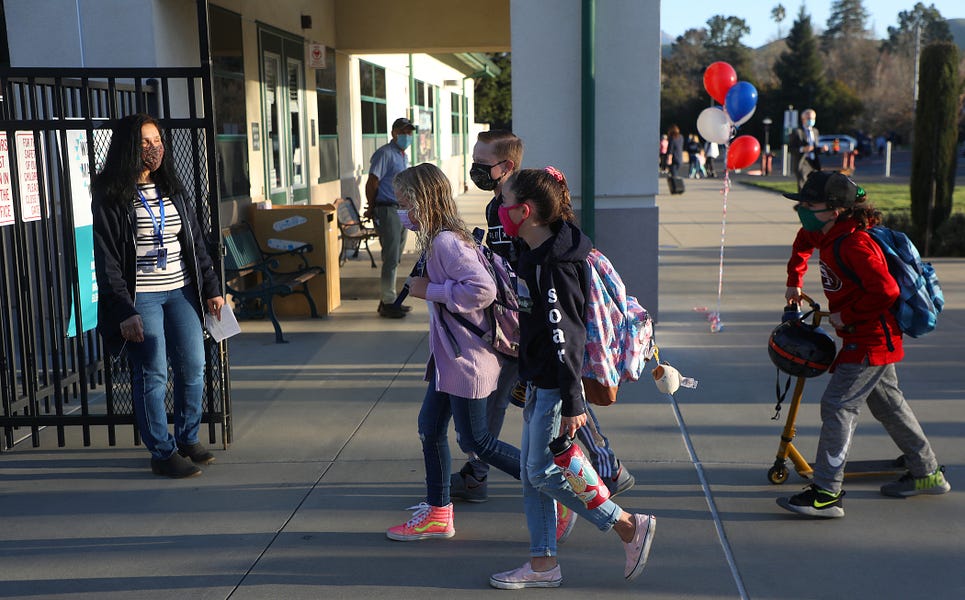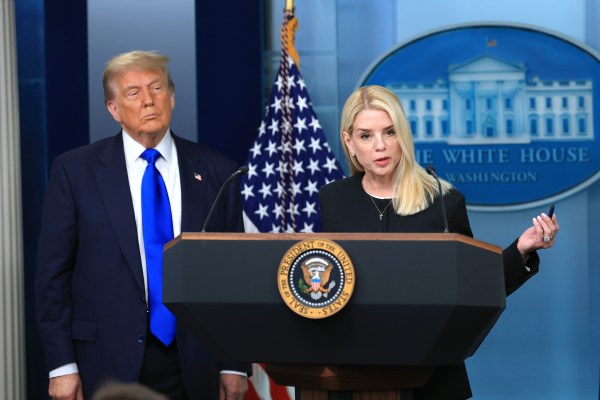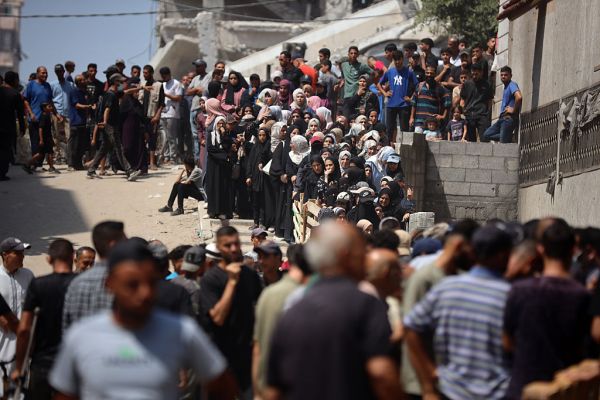Push was coming to shove. It was the third week of August, 2020, and public schools in Milford, Ohio, were scheduled to start the school year on the following Monday, August 24. District superintendent John Speiser checked in with the team that had spent a long summer working on the logistics of returning to school in person for the first time since March.
“There were multiple factors, not just one, but transportation was definitely one. We just didn’t have it quite ready yet,” Speiser said. “We got feedback from our staff that they weren’t ready. An important thing about leadership, I think, is to trust your people that you work with and listen. We just went on down the line and the answers were, ‘We’re just not there yet.’”
Speiser called the school board president, and they agreed: The school year would be pushed back a week. The message went out to families on Friday afternoon, August 21.
It wasn’t necessarily what parents wanted to hear. (I know—I was one of those parents.) One more week of wrangling childcare, one more week of keeping kids occupied amid restrictions on gatherings. But on August 31, as promised, buses trekked through neighborhoods. Teachers welcomed students. Classrooms looked a little different, and so did the schedule, but for the first time since mid-March, thousands of students in our suburban Cincinnati public school district experienced a relatively normal school day. After that last hiccup, Milford made it into mid-February without any district-wide closures. The closures that did happen were for snow, not COVID. In-person schooling in the middle of a pandemic was never going to be easy. But it is possible.
That’s not the narrative that has dominated the national conversation on schools. In major urban and suburban districts around the country, teachers unions have resisted attempts to return to school, and some blue-state governors have issued guidance making reopening schools full time all but impossible. But while those polarizing fights garnered headlines, administrators and education leaders elsewhere plunged ahead, using creativity and flexibility to welcome students back to school—safely. As vaccination campaigns and dwindling case numbers make a return to school more likely for those who have been home all year, it’s worth looking at how these districts have succeeded.
Just how many kids have been in school all year? How many haven’t been at all? Precise data is hard to come by: The United States has about 13,500 public school districts of varying sizes, and many states left it to individual districts to decide whether and how to reopen. A few, like Florida and Texas, ordered schools to open. But at the start of the year, less than 40 percent of students were able to attend school in person. That number is creeping up now that cases are dropping and teachers are getting vaccinated, but the number of students who’ve been remote for all or most of the year is still alarming. Most of California’s 6 million public school students have been learning remotely. Chicago schools opened widely for the first time on March 1.
In many states, bars and restaurants have been open, albeit with limitations on hours or capacities, since late spring or early summer 2020. The same goes for gyms, movie theaters, bowling alleys, and museums. We can eat out, exercise, and experience culture. Why can’t many kids go to school? The truth is, while the school year has not gone perfectly for anyone, the districts that are open have been showing how it can be done.
In some cases, schools have had to close for a few days or a couple weeks because too many teachers were in quarantine and it was too hard to find substitutes. Cases spiked after holiday breaks, causing more temporary closures. Schools that have offered interscholastic sports have had more cases than those who haven’t.
But for the districts who have pulled off this immensely challenging feat, how have they done it? I spoke to the superintendent of my local district and several others, in different locations and from districts small and large. The specifics vary, but there are common elements (besides a long summer of planning): masks, reduced class sizes, and adjusted schedules to cut down on student interactions and congregating in hallways.
“We began in March,” Speiser said of planning for the 2020-21 school year. “Along the way we were thinking about, ‘What’s it gonna look like going into the following year?’ We began with a group of teachers and central office folks and principals. We met with them on numerous occasions and dialogues. We asked, ‘Is remote the best way to go?’ We came up with this plan that parents need an option.”
That option became known as Eagle Online. Online students have their own classes with dedicated teachers—they aren’t merely Zooming into the in-person classes. At the start of the school year, about 25 percent of families opted for this separate program. As cases have dropped and more families have felt comfortable returning, that number now stands at about 15 percent.
Even though the vast majority of parents in our district indicated a preference for in-person school over summer, the five-member school board was divided. The board had long conversations and those who had concerns shared them with the administration.
“Schools in Indiana opened earlier than we did—and the stories were scary,” said Andrea Rassin Brady, one of the board members who was concerned about in-person instruction. “We were hearing about schools that opened for a few days and had to close almost immediately because the virus traveled so quickly. At that point, my position was that we should wait, observe, and learn: Why should we take the risk with our people and jump into the unknown when we knew other districts were opening and we could learn from them? We could open remote for a month and watch what happened. I felt that was a smart way to gather data so we could be as safe as possible when we did return in-person.”
Several board members and Speiser met with the county health commissioner. “She was more encouraging about opening, but she also worried me in other ways,” Brady said. “For instance, she told us that spread would come from sports, no question—yet we were continuing with plans to allow sports (practices had already started). There seemed to be so many conflicting messages, it was hard to know which way to turn. She did strongly recommend opening in-person, however, and it was slightly reassuring to hear that from an expert.”
The district implemented a number of mitigation measures. Students have to wear masks except at lunch, recess, or gym class, and the district purchased trifold plexiglass shields for each student. In-person high school students are on a block schedule—instead of having seven class periods a day, there are four. As such, classes are longer, and they meet every other day. Students have an extra study hall on the day they have only three classes. Other measures were implemented differently at different schools based on needs. For example, our junior high is overcrowded with a particularly small cafeteria. So the school set up tables in the gym, and students who have gym class before or after lunch help with the setup and takedown of tables.
When I asked Speiser why high school students are not allowed to access their lockers (the idea being to cut down on hallway traffic) but junior high kids can, he explained that he left many such decisions up to the principals and staff in those buildings. He wasn’t the only administrator to do so. The importance of incorporating feedback from teachers and principals was a common refrain among those I spoke to.
“The teachers are critical to any decision that we make, and I think that when you feel a part of the decision-making process, you’re more apt to make it not only successful, but the buy-in is better,” said Steven VanMatre, the superintendent of Premont Independent Schools, a small district of 700 students about 70 miles south of Corpus Christi, Texas. “We asked them, you know, how many kids are you comfortable with in the classroom? And they told us.”
VanMatre explained that the district dropped its student-to-teacher ratio from about 23-to-1 to roughly 12-to-1, with some classes having 13 or 14 students. The district opted—reluctantly—to eliminate fine arts and physical education at the elementary level so those teachers could take on more traditional classes.
“The reading and writing teachers integrate physical education so that the PE teachers can teach a class, so we can further reduce the teacher size,” he said.
Granted, a district that small doesn’t face all the challenges of a mega district like Los Angeles Unified. And its small size affords it a few advantages. The district is able to mostly avoid sending kids into quarantine because it has been able to offer testing weekly to everyone and also test anyone who shows symptoms.
At the same time, VanMatre realizes that the demographics of his district make in-person instruction crucial.
“We’re about 98 percent Hispanic,” he said. “And we have a very high economically disadvantaged rate, about 94 percent. And so that subgroup of kids really, really needs to be at school. We have single parents with multiple kids in different grade levels and asking them to support online instruction is extremely difficult, particularly when they work.”
VanMatre had a head start on some of his peers. Texas reopened its schools in June, and Premont worked to expand his summer school options.
“We had probably the most robust and vibrant summer program that we’ve ever had,” he said. “We had some new programming, primarily at the secondary level: We had an engineering academy, we had electrical construction trades, we had health science. Normally we service primarily at-risk students in the summer, usually a little over 100. I would say we had over 250 kids pretty much all summer. Our county had a very high positivity rate but we were really, really comfortable in our communication and our mitigation strategies that we felt—and I think the CDC research now is showing—that one of the safest places for people to be is at school.”
But it’s not just smaller districts that have been successful this year. The School District of Pickens County serves more than 16,000 students in and around Easley, South Carolina. The district has 12 elementary schools, two specialized elementary academies, five middle schools, four high schools, and a career and technology center.
Through a stroke of good luck, the district was well-positioned for a widespread transition to remote learning last March because it had already been developing a virtual program that allowed for more personalized learning.
“I focused on the entire district to get better with personalized learning and increased choices for parents, no matter what they wanted to do,” Superintendent Danny Merck told me. “It was our job to meet their needs instead of vice versa.”
When the pandemic set in last year, Merck emphasized the personalization aspect over the technological aspect of remote learning. “Our technology specialists, they had already done some work with video conferencing in a WebEx,” he said, describing the Zoom-like application the district had been exploring. “We didn’t realize it at the time, but that was really one of the best moves that we’ve made. We didn’t put pressure on teachers to be perfect with WebEx. We put pressure to remain in touch with students by phone and email, just staying in touch. So we stayed in touch with over 16,000 kids and we only lost eight and they proved to move out of state.”
One of the constants among the superintendents with whom I spoke was flexibility, which has taken on different forms in different districts. At Milford, for example, the district has responded to outbreaks with targeted, temporary moves to remote learning. Instead of closing an entire elementary school, the district will shift a grade level with a high number of quarantined students to remote learning. The high school has temporarily closed twice, most recently after the holiday break saw an increase of cases coming into the school from community spread.
In Pickens County, Merck implemented a sort of planned flexibility: school calendars that looked only six weeks into the future, with remote learning days built in to give teachers a break and allow students to catch up.
“I spoke at church the day before school started, and I told them, ‘I’ve been wrong since March. And so why should I try to guess 180 days?’ So I’m just going to try to guess six weeks at a time. And what we’re trying to do is prevent the spread so that we can go to school more the next six weeks.”
How has the year gone? None of the administrators with whom I spoke had suffered any COVID-related deaths among students or teachers. Merck told me that Pickens County had had six teachers hospitalized. But all the superintendents told me that the cases they did see were overwhelmingly attributable to community spread. That tracks with what I’ve witnessed on our district’s weekly COVID dashboard. We went almost two weeks after the start of the year without any cases. Then the emails started rolling in alerting families to positive cases. One here, one there. And then more. During the week ending January 15—the height of the “third wave” when we saw hundreds of thousands of new cases and up to 4,000 deaths nationwide every day—we had 110 positive cases among in-person students and staff. As a result, 448 students—nearly 10 percent of those enrolled in-person—and 17 staff were quarantined. For the week ending March 5, there were six total positive cases and 29 total people in quarantine.
The forced experimentation, with new methods of learning, with different ways to arrange the school day, has in some cases yielded positive results and could lead to permanent changes. Pickens County, as I mentioned, had been exploring ways to incorporate virtual learning, mostly for secondary students. They launched the Pickens County Virtual Academy for grades K-12, and about 2,000 students are enrolled. Regardless of whether the pandemic will require online learning in the fall, the academy will remain open: John Eby, spokesman for the district, says that 270 students are already enrolled, a figure they hope doubles.
Other, smaller measures may last too, like block scheduling. VanMatre, in a sentiment no doubt shared by parents of young children everywhere, hopes that kids can maintain their newfound discipline for hygiene to cut down on the spread of colds and flu.
But as much as there have been silver linings, and as much as most experts agree that in-person learning is the best option for most students, it’s obvious that other aspects of our pandemic life have been hard on our kids—isolation from friends and family, parents and guardians being out of work, general uncertainty about a return to normal, and so on. Astute observers like VanMatre realize that even districts that have done the best possible job can’t replicate a perfect school year.
“The other thing that really worries me is that school is more than teaching and learning. It’s socialization, a place to have fun, to laugh. I don’t hear that laughter like I have in the past. The absence of laughter really concerns me. Now, the teachers might have been mad at me, but I went into the lunch room the other day, and I just started asking the kids, very loud, ‘Why aren’t, y’all having fun?’ We used to just say ‘Lower your voice.’ Now? I’ve missed it. I’ve missed their voices.”







Please note that we at The Dispatch hold ourselves, our work, and our commenters to a higher standard than other places on the internet. We welcome comments that foster genuine debate or discussion—including comments critical of us or our work—but responses that include ad hominem attacks on fellow Dispatch members or are intended to stoke fear and anger may be moderated.
With your membership, you only have the ability to comment on The Morning Dispatch articles. Consider upgrading to join the conversation everywhere.